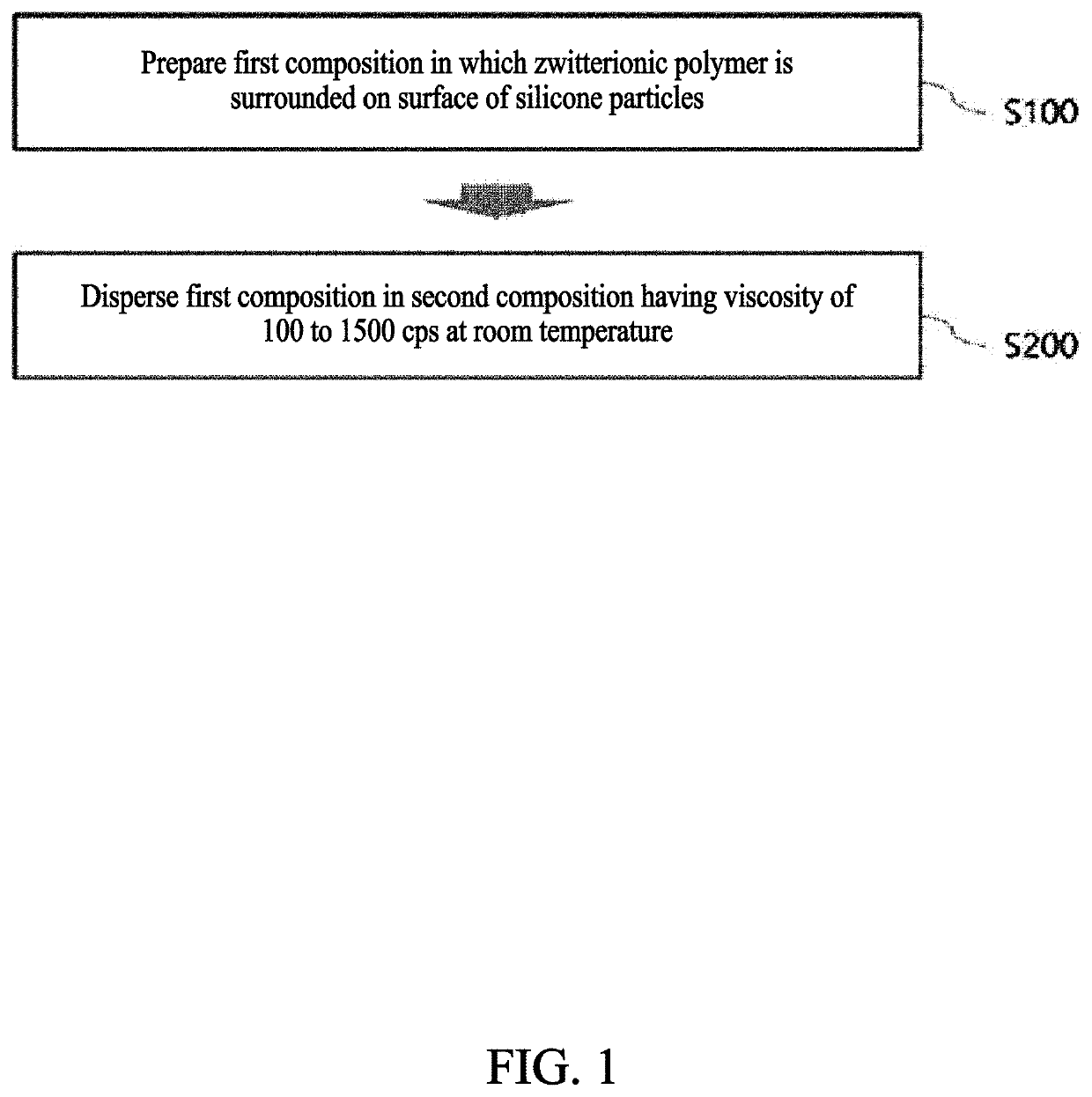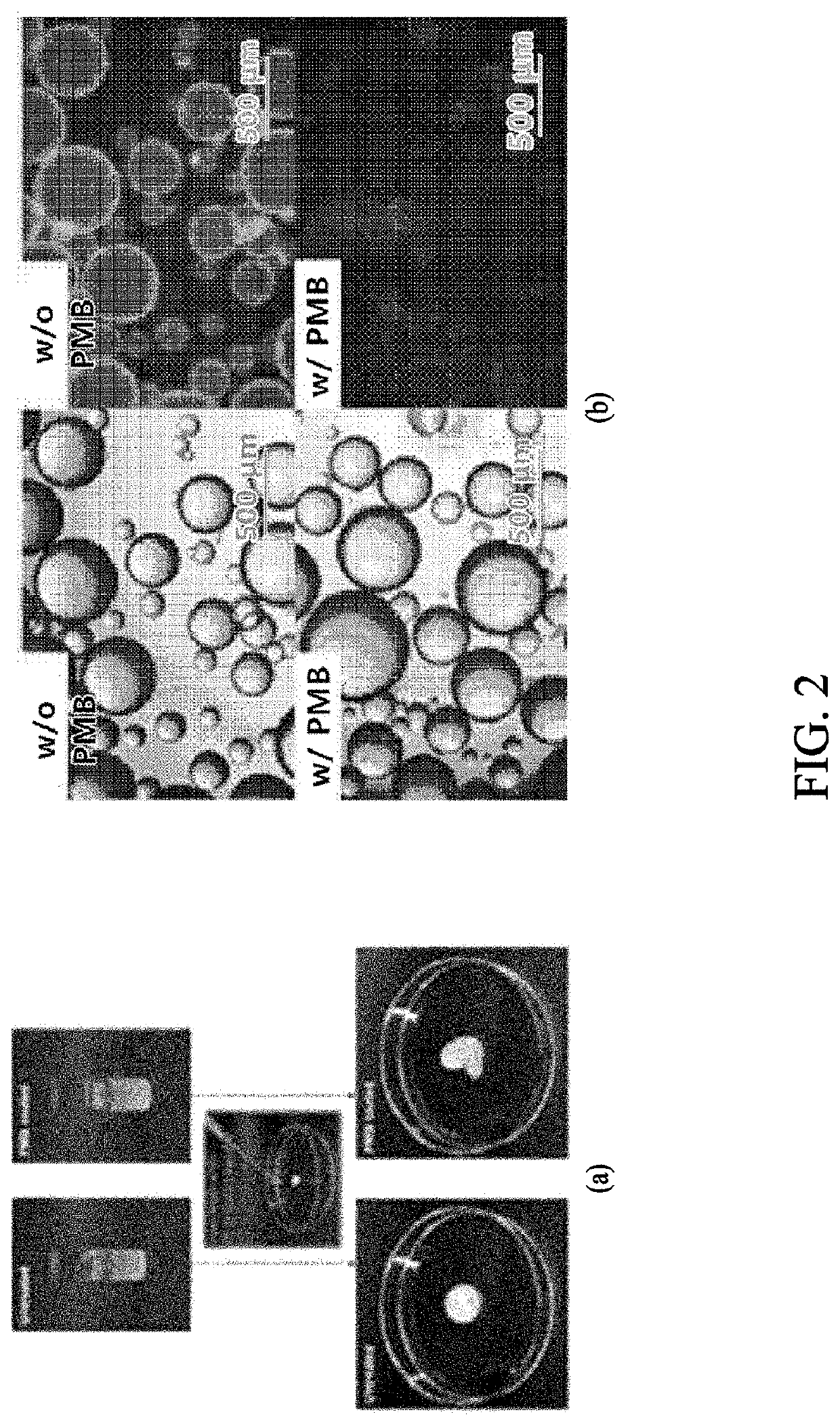In vivo bulking agent, injection comprising same, and preparation method therefor
- Summary
- Abstract
- Description
- Claims
- Application Information
AI Technical Summary
Benefits of technology
Problems solved by technology
Method used
Image
Examples
preparation example
[0099]PMB (Poly(MPC-Ran-BMA) Polymer Synthesis
[0100]PMB, a random copolymer, was synthesized by copolymerizing MPC (2-methacryloyloxyethyl phosphorylcholine, KCI), a cell membrane mimicking zwitterion, with BMA (butyl methacrylate, TCI), a hydrophobic monomer.
[0101]In order to synthesize a PMB (Poly(MPC-ran-BMA) polymer, the reactants were synthesized at the following input ratios as follows (see Table 1).
TABLE 1MPCBMAAIBN(mmol)(mmol)EthanolToluene(mmol)Prepa-738.2 mg355.5 mg2500 μL2500 μL4.1 mgration(2.5 mmol)(2.5 mmol)(0.025 mmol)example
[0102]738.2 mg of MPC, 355.5 mg of BMA, and 4.1 mg of AIBN were added to a mixed solvent of 2500 μL of ethyl alcohol and 2500 μL of toluene. After injecting high-purity argon gas into the mixture for 10 minutes, the reactor was sealed, and the mixture was magnetically stirred in a silicone oil bath at 60° C. for 24 hours. After stirring, the mixture was added dropwise to acetone in an excess of about 50 times the amount of the mixture and then filt...
example 1
on of In-Vivo Bulking Agent
[0106]PMB Polymer Coating on Silicone Particles
[0107]In order to coat the surface of the silicone microparticles with PMB, the reactants were prepared by adding them as shown in Table 3 below (see Table 3).
[0108]More specifically, 1.1 g of PDMS as a silicone material (a mixture of 1.0 g as an injection and 0.1 g as a curing agent) was defoamed for 30 minutes under vacuum at room temperature. To 1.1 g of the defoamed silicone, 10 mL of purified water, 250 mg of PVP as a dispersant, and 10 mg of PMB as a coating material to improve biocompatibility were added (PDMS 10% (w / v), PVP (polyvinylpyrrolidone) 2.5% (w / v), PMB 0.1% (w / v)).
TABLE 3PDMSPurified waterPVPPMBExamples1.1 g10 mL250 mg10 mg
[0109]The silicone particles were dispersed for 5 minutes by generating ultrasonic waves with an ultrasonic generator in the mixture, and then redispersed by a vortex for 5 minutes again. A magnetic stirring bar having a length of 75% or more of the diameter of the reactor ...
experimental examples
Experimental Example 1. Property Analysis of Surface Protein Adsorption
[0114]In order to indirectly identify the biocompatibility of the silicone particles coated with the PMB polymer prepared in the Examples in vitro, the adsorption strength of the fluorescently-labeled protein was evaluated. Protein adsorption properties of the silicone particles coated with the PMB polymer in Example 1 and the silicone particles of Comparative Example 1 were analyzed. In addition, the result is shown in FIG. 2.
[0115]FIG. 2(a) is a view showing the properties of the injection-type implants of the silicone microparticles prepared in the PMB surfactant polymer solution, and FIG. 2(b) is a view showing the results of analyzing the surface protein adsorption properties of the particles.
[0116]Referring to FIG. 2, it was identified that almost no protein was adsorbed on the surface of silicone particles prepared as one-pot in PMB solution, compared that a large amount of protein was adsorbed in the case...
PUM
 Login to View More
Login to View More Abstract
Description
Claims
Application Information
 Login to View More
Login to View More - R&D
- Intellectual Property
- Life Sciences
- Materials
- Tech Scout
- Unparalleled Data Quality
- Higher Quality Content
- 60% Fewer Hallucinations
Browse by: Latest US Patents, China's latest patents, Technical Efficacy Thesaurus, Application Domain, Technology Topic, Popular Technical Reports.
© 2025 PatSnap. All rights reserved.Legal|Privacy policy|Modern Slavery Act Transparency Statement|Sitemap|About US| Contact US: help@patsnap.com



